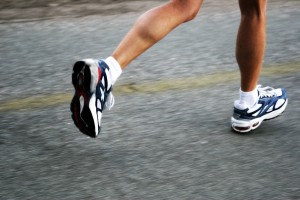 Many parents would like to see their kids more physically active, especially with the craze of video games, smart phones, and extensive computer work. Running would seem to be a great activity to engage in given that it is relatively inexpensive and easy to become involved in. Assuming the young athlete enjoys it, there are certainly pros to running, but what about the cons and what are the age appropriate distances that they could consider racing? What about a 5k, 10k, ½ marathon, or full marathon?
Many parents would like to see their kids more physically active, especially with the craze of video games, smart phones, and extensive computer work. Running would seem to be a great activity to engage in given that it is relatively inexpensive and easy to become involved in. Assuming the young athlete enjoys it, there are certainly pros to running, but what about the cons and what are the age appropriate distances that they could consider racing? What about a 5k, 10k, ½ marathon, or full marathon?
The Road Runners Club of America currently recommends the following for young runners.
- Ages 5 and under – “dash” events ranging from a few yards to 1 mile.
- Age 5 and over – kids fun runs ½ to 2 miles.
- Age 6 and over – may consider participating in a 5k run/walk.
- Age 13-15 – may consider a 10k to half-marathon.
- Age 18 and over – may consider a marathon or longer.
Interestingly, there is not much scientific research on young runners and the incidence of injury or the long term effects of children distance running. An article in the 2007 Journal of Pediatrics stated that “there is no scientific evidence that supports or refutes the safety of children running marathons, and there are no recorded data on injuries sustained. Ultimately there is no reason to disallow a young athlete to participate in a properly run marathon as long as the child enjoys this activity.” That would seem a bit surprising to many, and those of us in physical therapy and sports medicine can attest to many cases where chronic injuries were experienced by young runners who were simply doing too much.
Some general opinions from running coaches, but without research studies, suggest that age is not as important as running volume. Physiologically we know that distance running does produce a micro-trauma effect to bones and muscles that requires a recovery time. High volume running may not allow for an appropriate recovery, and in young runners who are in a growing phase and puberty that may put them at a higher risk for injury. Some in healthcare express concern that distance running by children with open growth plates may cause long term issues or slow growth rates, however this has never been scientifically validated.
Another variable, other than age, is running biomechanics. In every sport there are primary and secondary muscles that are called on to perform the athletic task, however the muscles and movements are different when comparing running to other sports such as swimming or biking. Runners are never on both legs at the same time, which means that they must stabilize the body’s center of mass with core body, hip strength and other muscles. Young runners often have bones growing faster than their muscles and thus biomechanically they become unstable. This causes compensations in their running biomechanics which can lead to overuse injuries.
Some articles have shown that children in Kenya run up to 10k daily and have no adverse effects. What some of these articles fail to discuss is that these children have likely done extensive walking and combinations of run/walk leading up to the higher mileage, not to mention a genetic factor.
So what should the guidelines be for these kids who want to be active and compete in formal races at these various distances? The Road Runners Club of America as developed guidelines for youth running based on the book “Training for Young Distance Runners” written by Larry Greene, PhD and Russ Tate, Phd.
- Make Running Fun
- Emphasize Good Technique
- Focus on Participation and Self-Improvement
- Consider Individual Differences
- Limit Systematic Training and Competition Before Puberty
- Increase Running Workload Gradually
- Participate in Age Appropriate Running Events
I believe physicians and physical therapists would agree with these guidelines for the most part. With the lack of scientific data on the short and long term effects of youth distance running it is always a safe bet to keep it simple, fun, and stress free both mentally and physically.
Brad Ott MSPT cert MDT
Physical Therapist
Rebound Sports & Physical Therapy
Acknowledgements:
Tom Hecker, DPM and Tom Anderson, DO Orthopaedic Center of the Rockies

0 Comments